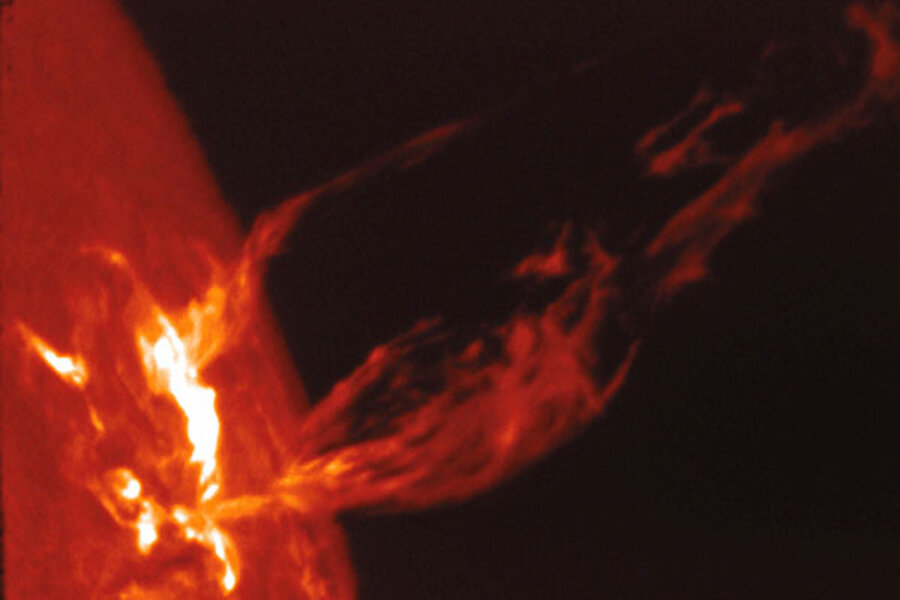Flares emit radiation at wavelengths ranging from radio frequencies at the low end to gamma rays at the high end. Most of the radiation, however appears at wavelengths above visible light. Flares, which are associated with sunspots, are driven by energy released when magnetic fields rising from deep in the sun break and reconnect, releasing large amounts of energy. When extreme ultraviolet and x-ray radiation from the flares reach Earth, they disrupt the ionosphere over low latitudes on the sunlit half of the planet. This can disrupt low- and high-frequency radio communications, such as shortwave broadcast services. Outside of Earth's magnetic field, the incoming high-energy protons form what scientists call a radiation storm, which can disrupt or disable satellites and threated astronauts conducting spacewalks. Because the x-rays and the far-UV light travel at the speed of light, the communications disruptions appear in advance of any geomagnetic or radiation storm the arriving charged particles trigger. Sometimes not by much. In 2005, physicists were stunned by an intense radiation storm from a solar flare; the protons reached Earth in 15 minutes instead of taking a day or more. Light takes 8 minutes to arrive from the sun. Space-weather forecasters pay special attention to strong flares, in no small part because they accompany fast coronal-mass ejections.

National Solar Observatory/AP/File
A photo from the National Solar Observatory of a 2006 solar flare.




